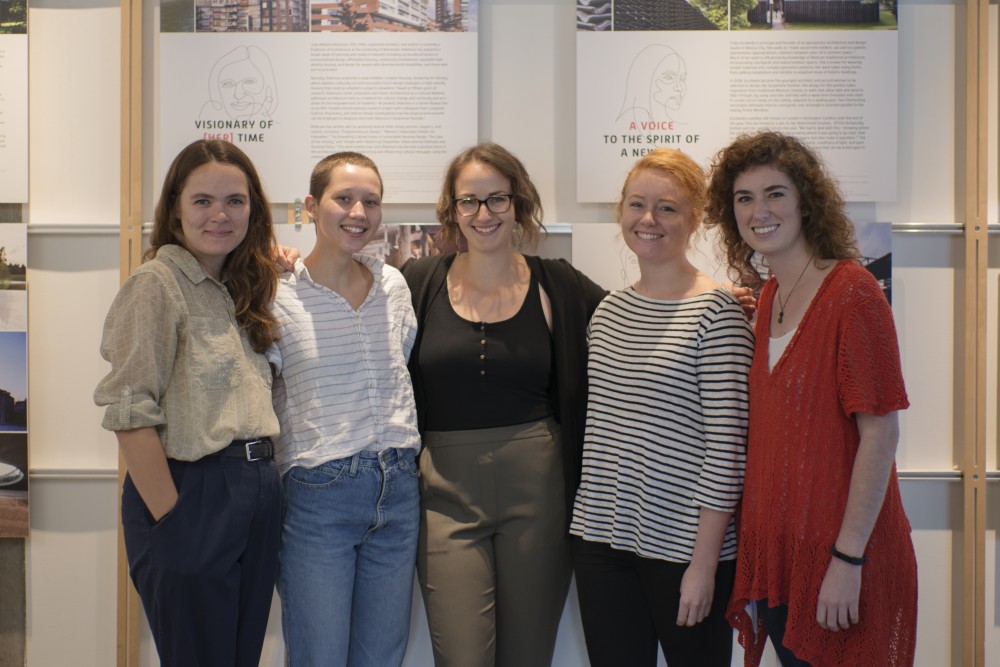Members of a University of Minnesota student group designed an exhibit to improve representation of women in the field.
Women in Architecture Student Organization, which is dedicated to promoting gender equity in the architecture world, organized an exhibit titled “Gendering Architecture, Architecting Gender” to be displayed from Sept. 4 to Feb. 3, 2019 in Rapson Hall.
The exhibit features contemporary and past female architects to highlight unsung contributors to modern architecture.
“The exhibit was meant to rewrite a historical narrative by inserting women into these powerful architectural movements,” said Dana Saari, a junior studying architecture and an organizer of the exhibit. “We don’t think about how in our history classes, there are no female architects referenced.”

Saari said gender disparity is still an issue in the architecture world. She became involved with WIASO last year after becoming frustrated with microaggressions and sexist remarks she received during reviews of her work.
“[The exhibit] is highlighting women who were undervalued,” said Brittany Lindsay Pool, a graduate student studying architecture and an organizer of the exhibit.
Lindsay found issues and double standards related to her gender, even in the professional architecture world. Lindsay said she found herself not being taken seriously and marginalized into architecture roles stereotypically considered “feminine.”
“In my first internship, I was fighting to get architecture work. They kept putting me in interior design roles or shoved me back to working and organizing interiors material, which was frustrating,” Lindsay said.
Saari said one of her female colleagues was told by a professor that they would not review her work because women should not be architects.
The treatment of women in the field has slightly improved over time — from overt sexism to microaggressions and implicit biases — there is still room for more improvement, however, Saari said.
Along with the exhibit, members of WIASO have spoken with faculty with the objective of diversifying their syllabi to include more female architects, Lindsay said.
“We just have to bring more women in,” said Julia Robinson, an architecture professor at the University who is featured in the exhibit.
Robinson, a University graduate, was the first female architecture professor in the school. Robinson said when she started at the University, she was one of two women in the architecture school of 125 students.
“Being a woman in this field and in this department was so marginalizing at the very beginning … I felt like I was not considered central to the program,” Robinson said.
After seeing herself in the exhibit, Robinson said she felt humbled.
“But I realized maybe things are different. It was very exciting,” she said.








